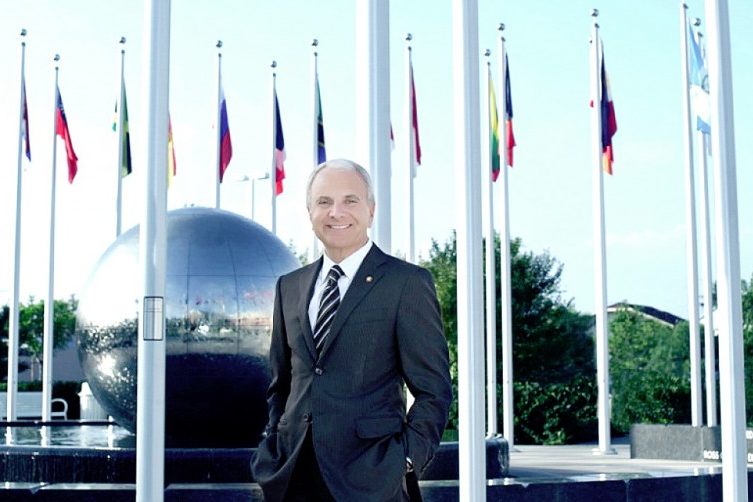We all watched Paolo Sorrentino’s Academy Award-winning film The Great Beauty, and we all dreamed of walking with the protagonist through the Rome’s magnificent Renaissance architecture.
One of the most beautiful spots celebrated by the movie and loved by tourists from all over the world is certainly Bramante’s Tempietto at San Pietro in Montorio, near Gianicolo and the monumental Fontana dell’Acqua Paola. This small treasure, hidden in the church’s courtyard, was commissioned to Donato Bramante in 1502 by Pope Alexander VI to honor the alleged place where St. Peter was crucified, and it marked the beginning of High Renaissance style in Rome.
Along with Michelangelo and Raffaello, Bramante was, in fact, one of the greatest Italian architects and painters of that period. This year marks the 500th anniversary of his death (1444-1514), commemorated – among other initiatives – with the issue of a postage stamp, featuring the spiral staircase that he designed for the Octagonal Courtyard in the Vatican Museums, and a special exhibition in Vicenza (November 9, 2014 through February 8, 2015), showcasing the artist’s revolutionary project for St. Peter’s Basilica.
Bramante’s Tempietto at San Pietro in Montorio, near Gianicolo
Inspired by the Pantheon-type structure, Bramante’s plan is considered a milestone in the history of Western architecture, innovating the space and image of Renaissance buildings and churches, and served as the basis of Michelangelo’s design of the Basilica executed in the mid-1500s.
Native of the small town of Fermignano, in Marche region, Donato Bramante probably studied in the nearby city of Urbino with artists the likes of Piero della Francesca and Paolo Uccello. Then he moved to Milan, where he worked for Duke Ludovico Sforza as a painter in the church of Santa Maria presso San Satiro and as an architect at Santa Maria delle Grazie and Sant’Ambrogio.
After the fall of Sforza in 1499, he was welcomed in Rome by Pope Julius II, who appointed him papal architect and assigned him important urban projects, including the complete rebuilding of the Constantine Basilica of St. Peter. The Pope and Bramante died before his groundbreaking plan could be realized, and very few original drawings survived.
According to the one on view in Vicenza, on loan from the Uffizi Gallery in Florence, Bramante’s grandiose vision for St. Peter was slightly different from the Basilica that was actually built, and inspired by the perfect symmetry of ancient classical architecture, combined with elements of Christian art to create a stunning monumentality. After his death, the centralized Greek cross plan was replaced with an elongated nave in the Latin cross form, and the clear proportions of large barrel vaults surmounting each end of 4 equal-size arms around a central dome were altered.
Yet, Bramante’s style dominated 16th century Italian architecture, and paved the way for the Baroque era that followed. Examples of his artistic genius can be admired throughout the Eternal City, from Via Giulia to Santa Maria della Pace, thanks to the ambition and foresight of his patron Pope Julius II, who summoned the most talented artists of the day to add to the great beauty of Rome.






























